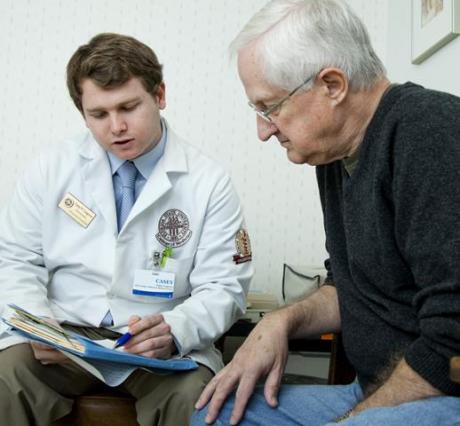Internal Medicine

Internists are personal physicians who provide long-term, comprehensive care in the office and the hospital, managing both common and complex illnesses in adolescents, adults, and the elderly. Internists are trained in the diagnosis and treatment of cancer, infections, and diseases affecting the heart, blood, kidneys, joints, and digestive, respiratory and vascular systems. They are also trained in the essentials of primary care internal medicine which incorporates an understanding of disease prevention, wellness, substance abuse, mental health, and effective treatment of common problems of the eyes, ears, skin, nervous system, and reproductive organs. An internal medicine physician's primary responsibilities include heath maintenance and disease screening, the diagnosis and care of acute and chronic medical conditions, management of patients with multiple, complex medical problems, and serving as consultants to other disciplines such as surgery, obstetrics, and family medicine. An internist's work is characterized by extensive knowledge and skill in diagnosis and treatment.
The Work
Patient Profile
5 most frequently encountered conditions
1. Diabetes mellitus
2. Hypertension
3. Heart disease
4. Hyperlipidemias
5. Upper respiratory infections
Patient Load
Hours seeing patients per week< 30 30-40 41-50 51-60 > 60
17% 28% 30% 11% 14%
Number of patient visits per week
< 25 25-49 50-99 100-149 > 149
13% 18% 42% 21% 6%
Setting
58% of physicians in this specialty practice in an urban setting at:
• Office Based Patient Care
• Hospital Based Physician Staff
• Administration
4% of physicians in this specialty practice in a rural setting at:
• Office Based Patient Care• Hospital Based Physician Staff
• Administration
Mean USMLE Scores
Step 1 226Step 2 CK 239
Demand
The numbers of generalist residency graduates have declined each year since 1998, causing concern about future shortages says a study published in Health Affairs. Furthermore, between 2005 and 2025 the population above age 65 will increase 73 percent, the same group who seeks care from generalists at twice the rate of those under the age of 65. Using 2005 levels as a benchmark, a 20-27 percent shortfall, about 35,000 to 44, 000 generalists, is anticipated by 2025. The major decline is attributed to more and more graduates in internal medicine sub-specializing. To increase the number of generalists, the authors recommend that reimbursement reform realigning incentives to make the “medical home” financially viable should be at the top of the list.


